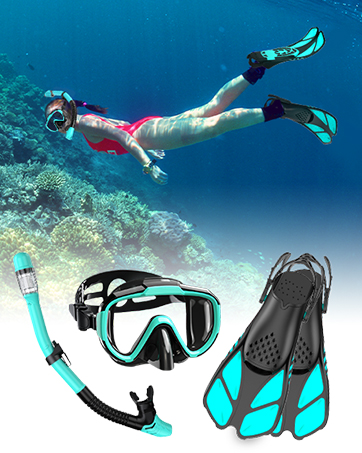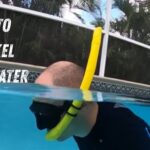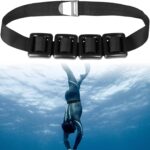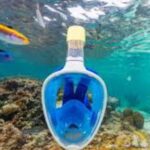How To Use Snorkel Gear Without Sipping Saltwater for Lunch
How to use snorkel gear — three innocent little words that sound as simple as “just breathe.” But let’s be real: your first attempt at snorkeling can feel more like reenacting a submarine emergency drill while chewing on a wet straw.
Trust me, you’re not alone if you’ve ever popped your head up from the water, coughing like a Victorian poet with consumption, wondering how on earth people make this look so easy on Instagram.
But take heart! Whether you’re preparing for a tropical vacation or just tired of pretending to understand how snorkels work, this guide dives deep (pun very much intended) into how to use snorkel gear without the drama. Let’s demystify every piece, every breath, and every bubble of the process.
How to Use Snorkel Gear
Here’s your crystal-clear breakdown on how to use snorkel gear:
1. Put on your gear properly
- Mask: Fit it snugly against your face – no hair under the seal. Strap it around the widest part of your head.
- Snorkel: Clip it to the left side of your mask strap. The mouthpiece should sit comfortably between your lips, not jammed in like you’re fighting it.
- Fins: Slide them on in shallow water or from the boat. Walk backward if on the shore to avoid tripping (yes, it happens a lot).
2. Get into the water calmly
- Choose a calm, shallow spot for your first dip.
- Float on your stomach with your face in the water.
3. Breathe slowly through the snorkel
- Take calm, slow breaths in and out through your mouth.
- How do you breathe underwater with a snorkel? You don’t inhale like you’re doing a cardio workout. You simply relax and breathe through the tube while floating.
4. Swim with gentle kicks
- Keep your arms relaxed at your sides.
- Use small, slow kicks from the hips, not your knees (no bicycle pedaling!).
5. Clear water if it enters
- If your snorkel floods, exhale sharply to clear it (blast technique).
- If your mask leaks, lift the lower part gently while exhaling through your nose.
That’s the base formula. But let’s take it deeper and knock out every beginner worry starting with how snorkels actually work.
How Does a Snorkel Work?
To understand how to use snorkel gear, you’ve got to grasp this first. A snorkel is basically a J-shaped tube that allows you to breathe air from above the water’s surface while your face is submerged.
There are 3 main types:
- Classic snorkels: Basic tube, no special valve.
- Semi-dry snorkels: Have splash guards to reduce water entry.
- Dry snorkels: Come with a float valve that seals off the tube when you dive below the surface—perfect for beginners.
Pro Tip: Dry snorkels are your best friend if you’re just starting out or are worried about swallowing water. If you’re shopping, check out the best snorkeling gear sets with a dry snorkel included.
What Snorkel Gear Do You Actually Need?
Snorkel gear isn’t just the snorkel. A basic setup includes:
- Mask: Provides a clear view and seals around the face to prevent leaks.
- Snorkel tube: Lets you breathe while your face is underwater.
- Fins: Help you swim efficiently without tiring quickly.
- Optional gear: Snorkel vest, rash guard, reef-safe sunscreen.
A full-face mask combines the snorkel and mask into one unit, but be aware, they’re not recommended for deep dives or people with respiratory issues.
How do you use a snorkel and mask together?

- Position the snorkel mouthpiece so it fits comfortably without strain.
- Ensure the mask strap goes over the crown of your head, not above or below.
- Make sure the snorkel tip remains above the water surface while floating.
READ ALSO: How Much Weight Should I Use For Snorkeling
How to Do Snorkeling Without Panicking
Let’s face it: when you’re submerged and breathing through a narrow plastic tube, it’s natural to feel like you’re auditioning for a low-budget survival movie. But here’s how to not freak out and actually enjoy it.
1. Practice Breathing First
Before even dipping into the ocean:
- Put on your mask and snorkel on dry land.
- Breathe only through your mouth.
- Focus on slow inhales and slow exhales.
- Then, move to shallow water and repeat.
2. Get Comfortable Floating
Snorkeling isn’t about intense swimming. It’s about relaxed floating with occasional fin kicks. Most of your time will be spent face-down, gliding.
How Do You Snorkel Underwater?
So, you’ve mastered the float, now what if you want to go deeper and explore?
Here’s how you snorkel underwater:
- Take a deep breath.
- Tuck your chin, raise your legs, and dive down gently.
- Your dry snorkel will seal (if it’s a dry type).
- Once you come back up, blast exhale to clear any water from the tube.
Important: Never hold your breath too long or dive too deep. Snorkeling is surface-level exploration, not free diving.
How to Prevent Mask Fogging and Snorkel Leaks
Nothing ruins a view of coral more than foggy goggles and a mouthful of seawater. Here’s how to avoid both:
Anti-Fog Tips
- Rub a tiny drop of baby shampoo inside the lens before entering the water.
- Or, yes – use your spit. It works.
- Rinse gently with water (not seawater) before putting it on.
Leak Prevention
- Make sure hair isn’t breaking the seal.
- Don’t overtighten the mask – it should suction to your face, not crush it.
- Use a dry snorkel to minimize accidental flooding.
How to Clear Your Snorkel and Mask Mid-Swim
Even with the best gear, a splash can sneak in.
To clear a flooded snorkel
- Blow forcefully through the snorkel to expel water (blast clear).
- With dry snorkels, water rarely gets in unless you dive.
To clear a leaky mask
- Tilt your head slightly back.
- Pull the bottom of the mask away from your face.
- Exhale through your nose to push water out.
Don’t panic. Floating and breathing slowly while doing this is key.
How to Use Snorkel Gear Without Exhausting Yourself
If you find yourself huffing like you just ran a marathon, you’re overdoing it.
Swim Tips:
- Kick from your hips, not your knees.
- Stay horizontal, body flat.
- Don’t wave your arms – they’re just for balance.
- Breathe slowly and rhythmically.
A snorkel vest can help with buoyancy if floating isn’t your thing.
Where and When to Practice Snorkeling
Your bathtub won’t cut it, but a calm lagoon will.
Start:
- In a pool or shallow beach
- On a sunny, calm day
- With a buddy, always
Avoid:
- Rough waves
- Crowded boat launches
- Areas with strong currents or riptides
Use water shoes if you’re snorkeling off a rocky shoreline, they protect your feet and improve grip.
Snorkeling Safety Tips for Beginners
Snorkeling is generally safe, but don’t turn your vacation into a coast guard rescue story.
- Never snorkel alone
- Avoid touching coral or sea creatures
- Watch for boats or jet skis
- Use reef-safe sunscreen
- Take breaks – sunburn and dehydration are real
If you want reliable gear, check out our best snorkeling gear sets, quality equipment makes everything easier and safer.
Most Common Mistakes Snorkelers Make (And How to Avoid Them)
- Overtightening the mask → Leads to pressure marks and leaks.
- Breathing too quickly → Causes hyperventilation or dizziness.
- Trying to talk with the snorkel in → Don’t.
- Swimming too fast → You’ll wear out and miss the beauty.
- Wearing the snorkel on the wrong side → Always the left!
What to Pack for a Snorkeling Trip
Don’t show up to the reef with only a dream and a donut.
Bring:
- Snorkel, mask, fins
- Defog spray
- Snorkel vest
- Rash guard or wetsuit
- Water shoes
- Dry bag
- Towel, reef-safe sunscreen, reusable water bottle
Bonus: Waterproof phone pouch so you can post those sea turtle selfies. Waterproof cameras are also great if you have a budget for one.
INTERESTING READ: Are Full Face Snorkel Masks Safe
The Bottom Line on How to Use Snorkel Gear
How to use snorkel gear may seem intimidating at first, but once you learn the ropes (and tubes), it becomes second nature. With the right gear, a little practice, and zero shame in practicing in your hotel pool first, you’ll be floating face-down in blissful marine harmony in no time.
So go ahead. Dive in. Breathe easy. And remember, no one looks graceful in fins on dry land.



